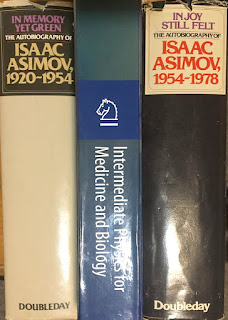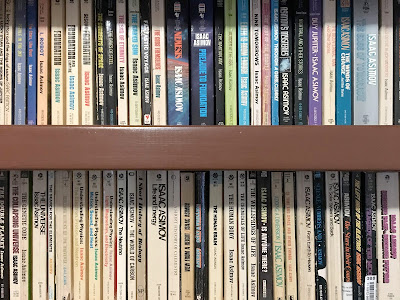 |
| Lady Luck, by Warren Weaver. |
Take three identical cards. Make a red mark on both sides of one, a black mark on both side of the second, and mark the third black on one side and red on the other. Mix them up in a hat, pick out a card at random, and put it down on the table without disclosing to yourself or anyone else what color is marked on the concealed side.Weaver is an interesting figure in 20th century mathematics and science, and fits in well with our theme of applying physics to medicine and biology. He was director of the Division of Natural Sciences at the Rockefeller Foundation from 1932 to 1955. According to Wikipedia,
Suppose the upper side of the card is marked red. You say to your opponent, “Obviously we are not dealing with the black-black card. That one is clearly eliminated. We definitely have either the red-black card or the red-red card. We shuffled fairly and drew at random, so it is just as likely to be one of these as the other. I will therefore bet you even money that the other side is red.”
It isn’t too hard to find takers, although ... the odds in favor of your bet are not even, but are actually two to one! The catch, of course, is the clause “so it is just as likely to be one as the other.” It is twice as likely that it is the red-red card! Forty years ago, when graduate students had to work for their living, the author used to teach this particular problem, at reasonable rates and using the experimental method, to his college friends.
Weaver early understood how greatly the tools and techniques of physics and chemistry could advance knowledge of biological processes, and used his position in the Rockefeller Foundation to identify, support, and encourage the young scientists who years later earned Nobel Prizes and other honors for their contributions to genetics or molecular biology.When I teach probability (often in the first week of a class on statistical mechanics or quantum mechanics), I like to use the example of playing craps. Weaver analyzes craps in chapter 15 of Lady Luck.
The game of craps furnishes a good example of probability calculations in a gambling game; for craps is sufficiently more complicated than “heads and tails” to raise some nice little problems, but not so complicated (as is bridge, for example) that the calculations are tedious.It is also interesting for the students, who have visited the casinos and played craps more than I have. (Anyone who understands probability will find gambling at casinos to be financially unwise).
In Intermediate Physics for Medicine and Biology, probability is particularly important in Chapter 3, when Hobbie and I discuss statistical mechanics. Probabilistic ideas also appear throughout the book in the form of the Poisson probability distribution, which we analyze in detail in our Appendix J.








